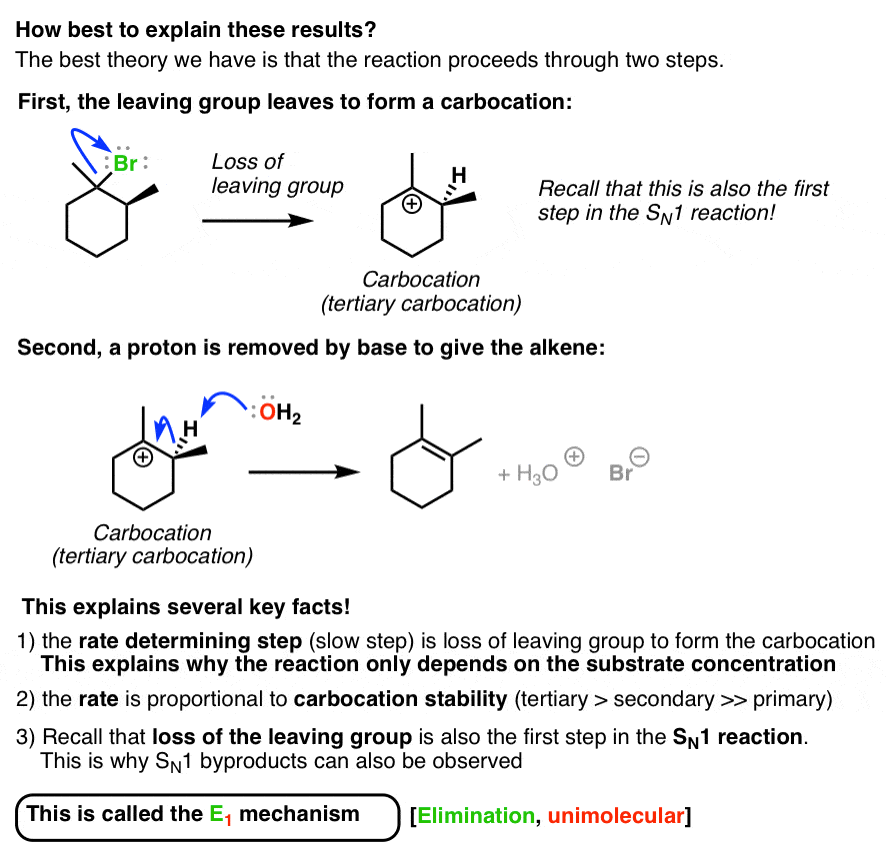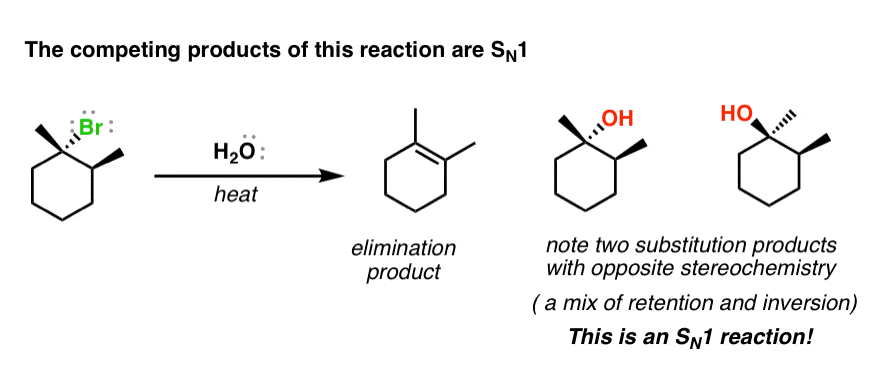What Best Describes the Major Product of an E1 Reaction
Alkene A Alkene B Alkene C Question 5 As weve seen SN1E1 reactions can be quite messy and can generate multiple products. Identify the mechanistic pathways respectively for.

Solved The Major Product Maior Product Of The Following Chegg Com
Science Chemistry QA Library 11 Which mechanism best describes the pathway of the following reaction.

. The product of the reaction is a n _____. The E2 pathway involves a transition state leading from starting material directly to the product. 618 100 Dehydration of 1-butanol with concentrated sulfuric acid at 140 C results in the formation of mainly trans-2-butene.
12 Identify the mechanistic pathways respectively for the products in the following reaction. Was this answer helpful. In elimination reactions the most highly substituted alkene product is the major product.
B The reaction follows a new mechanism involving the formation of a carbanion intermediate. The product forming step of an E1 reaction is more exothermic than that of an E2 reaction. More highly alkyl substituted and trans- cis- This E1 mechanistic pathway is.
Most often one of them is a hydrogen atom and the other is called the leaving group. The distribution of products in E2 reaction is different to distribution of products in E1 reaction. Istep aSN1 d E2 t-BuOH b SN2 e Multiple POIAY Protic c E1 f None of them ble 12.
In organic chemistry an elimination reaction is a reaction in which two substituents are removed from a molecule to form an alkene. The reaction is concerted meaning that all bonds are broken and formed in a single step. E2 and E1 reactions differ significantly in the nature of the transition states that determine the regiochemistry of the product.
34 Which of the following statements is false about the E1 reaction. What is the major product for the following reaction sequence. 23 Which of the following best describes the carbon.
Find The major product B of the following sequence of reactions is. In order to accomplish this a base is required. 29 The major product from the reaction of 2 - chloro - 2 - methylpentane with sodium ethoxide in ethanol results from which of the following mechanistic pathways.
Consider the reaction shown below in order to answer questions 5-6. B The reaction follows a new mechanism involving the formation of a carbanion intermediate. Whereas in E2 reaction 2-methyl-1-butene eluted out early but had an area mol larger than that found in E1 reaction.
The reader is strongly encouraged to review the pages on S N 2 and E2 reactions along with this page. Choose all that apply. Predict the major product of the reaction sequence below.
Which mechanism best describes the chemical process shown below. D The reaction undergoes an E2-type elimination mechanism in conjunction with a methyl shift. A The reaction undergoes an E2-type elimination mechanism.
D The reaction undergoes an E2-type elimination mechanism in conjunction with a methyl shift. Which mechanism best describes the chemical process shown below. An E2 elimination is a concerted one.
An E1 reaction involves the deprotonation of a hydrogen nearby usually one carbon away or the beta position the carbocation resulting in the formation of an alkene product. C The reaction undergoes an E1-type elimination mechanism in conjunction with a hydride shift. The major substitution product of the reaction is 1-phenyl-1-ethylamine with an α25D of -86.
NaNH2 excess mineral oil heat 1b. E1 reactions usually favour the more stable alkene as the major product. A The rate determining step is always the first step in the mechanism b The mechanism always forms at least one intermediate c The most substituted alkene is the major E1 product d Carbocation rearrangements can occur in this mechanism e Loss of a leaving group is always one of the.
A brief summary of the four modes of reactivity. This preview shows page 4 - 7 out of 10 pages. E1 and E2 mechanisms give alkenes at the products.
On treatment with hot basic KMnO4 followed by acidification X yields the following dicarboxylic acid. Answer to this question is option c. For a simplified model well take B to be a base and LG to be a halogen leaving group.
In E1 reaction 2-methyl-1-butene eluted out early but it had a very small area and correspondingly a very small mol. 0 0 0 0 Choose An Option That Best Describes Your Problem. The substituents are usually from adjacent carbons.
Determine a possible structure for an alkene X formula C9H14 on the basis of the following information. C The reaction undergoes an E1-type elimination mechanism in conjunction with a hydride shift. This page covers the mechanistically related reaction types S N 1 and E1.
This reaction occurs via a n _____ mechanism. Given that optically pure R 1-chloro-1-phenylethane has a specific rotation of -1090 and that optically pure R 1-phenyl-1-ethylamine has a specific rotation of 393 which of the following statements best describes this reaction. 11 A E1 S N2 B E2 S N2 C E1 S N1 D E2 S N1.
Its purpose is to point out the similarities and differences between these two reaction types as well as distinguish them from related S N 2 and E2 reactions. X adds one mole of hydrogen on catalytic hydrogenation. A The reaction undergoes an E2-type elimination mechanism.
Identify ALL possible elimination and substitution products that can be formed from the given reagents. There are 5. 11 Identify the mechanistic pathways respectively for the products in the following reaction.
An alkyl halide reacts with a strong base to form an alkene. Answer not in Detail.

The E1 Reaction And Its Mechanism Master Organic Chemistry

The E1 Reaction And Its Mechanism Master Organic Chemistry

Solved The Major Product Maior Product Of The Following Chegg Com
Comments
Post a Comment